Windows 11 Compatible Graphics Cards: Best Picks for 2024
10 min. read
Updated on
Read our disclosure page to find out how can you help Windows Report sustain the editorial team. Read more
- Memory: 24GB 384-bit DDR6X
- Output: 3 x DP; 3 x HDMI
- Interface: PCI-Express X16
- Size: 9.92 x 5.31 x 1.57 inches
- Power: 350W
- Suitable for 8k-quality gaming, but not recommended
- Memory: 12GB 384-bit GDDR6X
- Output: 3 x DP; 1 x HDMI
- Interface: PCI Express x16
- Size: 9.1 x 5.6 x 1.6 inches
- Power: 350W
- Lower memory than previous model
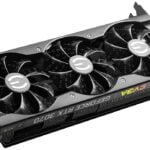
- Memory: 8GB DDR 6
- Output: 3 x DisplayPort 1.4a + HDMI 2.1
- Interface: PCI Express x16
- Size: 14.96 x 8.82 x 3.86 inches
- Performance consistency varies

- Memory: 16GB GDDR6
- Output: HDMI 2.1 port
- Interface: PCIe 4.0
- Size: 4.72 x 15.75 x 9.06 inches
- Design might not be for everyone
Owning a PC with a good graphics card can make a huge difference when it comes to everyday usage, online video experience, and gaming as well.
As graphics cards have evolved consistently over time, our experience with the Windows interface has been improving as well, peaking with the release of Windows 11, which has great capabilities to be one of the best OSs from Microsoft.
From beautifully designed applications to wonderful effects and other immersive PC experiences, all have to thank the evolution of the GPU. Even this is not the only important component of a PC, it is a good idea to also check out the Windows 11 system requirements, to ensure that the system is fully compatible.
In the latest years, another function has been attributed to GPUs, some users even opting to use an eGPU (external GPU) for their systems.
The aforementioned function is crypto-mining, which has taken the world by storm as soon as this type of currency has been released on the market.
When mining for cryptocurrency, the GPU is the one taking all the weight, and people have been known to invest in custom mining rigs that are built out of an array of GPUs connected in a series, or invest in a powerful crypto-mining capable PC, which is a far more affordable option.
To round the setup up, users will also need secure crypto-trading software to protect their hard-earned caches.
Another very popular section of the market is the gaming industry, which has seen amazing new game releases which would astonish even the pickiest with their immersive graphics and stories.
Of course, to be able to experience the full-fledged experience of the latest games, you will need to invest in a powerful gaming laptop if you’re keen on portability.
If that is not an important element for you, then a powerful desktop PC is also an amazing option that will allow you even more space for system customization.
As you can see from the options chosen for the guides mentioned above, a good GPU is important, but not on its own. In case you invest all your hard-earned money in the GPU and don’t have a powerful enough CPU, then the graphics processing unit will not be able to work at full speed.
How we chose the best Windows 11 graphics cards
As you might already know, not all GPUs are built the same, nor do they have the same capabilities. For this reason, choosing a good piece of hardware can be tricky, especially if you’re not very tech-inclined.
That’s where our team of expert testers comes into play. Their cumulated 15 years of experience testing the latest gadgets, devices, and hardware helps us provide you with an easy overview of some of the best GPU options on the market at this point.
We made sure to also explain the factors that our tester team considered while choosing these devices, and if you’re interested, we also explain how each of them applies to the hardware.
To make an informed decision when choosing the best Windows 11 GPUs, these are the elements that need to be considered:
➡ Graphics card memory
➡ Ports type and number
➡ Form factor
➡ Power Connectors
➡ Thermal Design Power (TDP)
➡ Memory speed/bandwidth
➡ VR capability
Now that we listed all the elements both you and our team of expert testers needed to consider, let’s dive a bit deeper into each of them, and see what impact they each have.
What to consider when choosing the best Windows 11 GPU?
GPU memory
The memory of your GPU is one of the most important aspects when it comes to the specifications of this hardware. The amount of memory installed will dictate how your PC will perform both in everyday tasks, and especially when it comes to gaming.
It would be recommended that the minimum amount of memory on a GPU is 6GB, but 8GB would be a minimum if you’re planning on playing games.
As you can imagine, the more memory, the better overall performance while gaming, and systems with GPUs that use 12, 14, or even 32GB will be able to run some of the latest games at full graphics settings (if accompanied by a capable CPU).
Ports types and number
As owning the best GPU on the market doesn’t mean anything as long as you can’t install it on your system, the type of the connective ports and their number will prove to be a critical element when making a choice.
Not all ports have the same task on your GPU though, so let’s explore some of the most common types, and what they do.
➡ GPU outputs
One important aspect of the GPU is its output capability, and thus, the ports which allow this action to be performed on your PC.
Below, you can see some of the most common output types found on GPUs, and a short description of their capabilities.
Most GPUs will have an HDMI port available, as this is one of the most-used output types, but DisplayPort (DP), and Mini-DisplayPort (MiniDP) offer even more versatility.
➡ GPU bus types
There are three main graphics interfaces available, each of them allowing different amounts of bandwidth to be processed, and thus, making some of them better than others.
A GPU bus is a connector between the card and your computer’s motherboard, and they vary considerably, depending on a multitude of factors that also include how old the GPU is.
Further, let’s explore what bus types most GPUs have, including older models, and finish with the latest and greatest.
- PCI (Peripheral Component Interconnect)
Being the slowest bus for GPUs, the Peripheral Component Interconnect doesn’t offer good processing speeds, so it was used mostly in older PCs that didn’t face the requirements of today’s software and games.
That being said, the PCI bus remains relatively common with GPU producers, probably because of how many people have hardware that supports this type of connection.
- AGP (Accelerated Graphics Port)
The Accelerated Graphics Port bus allows far better connection and processing speeds, but not all AGP buses are the same, having a few standards themselves.
The AGP 1.0, and AGP 2x don’t provide much power, even though better than the PCI bus. The AGP 4x starts reaching the acceptable bandwidth necessary for GPUs in this day and age, but the AGP 8x can reach speeds of up to 2.16 GB/s (twice as much as the previous model), which can offer great overall performance.
- PCIe (Peripheral Component Interconnect Express)
The PCI Express bus is the latest bus developed and used on GPUs, offering better bandwidth than the previously mentioned iterations.
There are two main PCIe bus models:
– PCIe 1x
– PCIe 16x
The PCIe format has been improved considerably, providing better performance-scaling, a more detailed reporting mechanism, a lower I/O pin count, and native hotplug functionality.
Most new GPUs will use a PCIe 16x bus, which means that the card uses 16 lanes (links) when connected to the motherboard, thus providing up to 4GB/s bandwidth. In the case of PCIe 1x, the bus uses only a single lane, and thus the bandwidth is limited to one path.
The best thing about having a PCIe bus on your GPU is that the bandwidth is used both for uploading data to the PC and downloading data to the card.
That being said, when comparing an AGP 8x bus with a PCIe, there are not many differences in bandwidths if the systems are identical in their architecture besides this element.
Users prefer having a PCIe bus overall, as the latest GPU models don’t come in an AGP version anymore, and the latter is more expensive as well.
Form factor
Even though this element applies without saying to any hardware you want to mount in your PC, it is still a critical element to consider when choosing a GPU.
Here are some factors that need to be considered:
- Board size – the design of the GPU, including length, height, and thickness (some GPUs have slim versions, others do not)
- Number of slots – graphics cards can have a single, dual, and even triple-slit configurations, with the latest gaming GPUs taking up two or more expansion slots
- Heatsink size – even though the card itself might only occupy 2 slots, the size of the heatsink could block access to other extra slots
Getting even one of the above-mentioned elements wrong will imply either that your GPU will not be compatible with your motherboard, or that you won’t have space to install it even though the bus port matches perfectly.
In some cases, you might find that for dual-GPU setups, even though you might have another available port, the board size or heatsink size will prevent you from installing the extension.
Power connectors
Even though the power consumption for most common GPUs is the 75W maximum which the PCIe slot provides when we’re talking about performance-inclined graphic cards the situation changes dramatically.
Depending on the configuration of the powerful gaming GPU, the power requirements increase exponentially in reports with high-level processing speeds and other capabilities.
Some GPUs have a set of 6 or 8 pin connectors, while other options can have 2, or even 3 sets of 6 or 8-pin connectors.
As you can see from the image presented above, the Nvidia GeForce RTX 3090 GPU produced by EVGA uses 3 sets of 8-pin connectors.
Choosing the right setup is extremely important because having a powerful GPU that can’t be powered properly is not going to be a great choice.
Thermal Design Power (TDP)
The TDP values of your GPU is another very important aspect you need to consider when making a choice, and it involves the measuring of your hardware’s heat dissipation capability.
Even more, the TDP will give you a useful estimate as to how many watts of power your GPU requires to run the card optimally.
As an example, if your PC uses a 500-watt PSU (power supply unit), and the CPU takes up 100 watts, then installing a GPU that needs 250-watt TDP will only work if the power supply unit is upgraded.
As you might expect, the type and power of your GPU plays a critical role, but simply adding up the total wattage requirements for the system you’re trying to build, and then deducting that value from the total power of the PSU will give you the answer to the question: Could I install a 250-watt GPU on my device?
Memory bandwidth
Even though not as important as the previously-mentioned elements, the bandwidth of some cards can make a card faster than another.
This is measured by the type of memory used in the card, and it is marked with GDDR4, GDDR5, GGDR6, etc.
For example, if one card from the same brand and same model using GDDR5 memory will perform slower than one which uses GDDR6 memory, with the actual impact on usage being reported to the difference in bandwidth.
VR support
Even though VR support is not a critical element in any way, investing in a GPU that has this feature is a good idea, especially as the market is evolving towards the VR world more and more.
Being able to run VR games on your PC can make a huge difference, allowing you to use a VR headset to explore fantastical worlds, and interact with them seamlessly.
➡ If you want to experience the state-of-the-art processing power the market has to offer while enjoying some of the latest game titles released, then going with the GeForce RTX 3090 is the best choice.
That being said, performance costs, so choosing this option won’t be very affordable, but worth every penny if you choose to take this route.
➡ To save some money while also being capable of running the latest game releases without issues, the GeForce RTX 3080 Ti GPU is another very powerful device.
Even though the capabilities of this GPU are below the average FPS ratings offered by the first choice, you can’t go wrong with this device either.
➡ In case you want to spend a smaller amount of your hard-earned cash on a GPU, but still want to get some great and immersive experiences from your PC setup, then both the GeForce RTX 3070 and Radeon RX 6900 XT GPUs are great choices.
The latter will be less capable than the RTX 3070, but will also affect your bank account less, so it all comes down to your preference and financial circumstances.
As we already discussed the features you need to look out for when searching for a good Windows 11 GPU, let’s dive into the actual product options.
GeForce RTX 3090
- Memory: 24GB 384-bit DDR6X
- Output: 3 x DP; 3 x HDMI
- Interface: PCI-Express X16
- Size: 9.92 x 5.31 x 1.57 inches
- Power: 350W
- Suitable for 8k-quality gaming, but not recommended
The RTX 3090 model from Nvidia was released towards the end of 2020 and has since become recognized as the fastest GPU on the market.
Built with Nidia’s latest architecture called Ampere, it brings more efficiency and overall performance than the previous Turing models.
The RTX 3090 uses 10.496 CUDA cores, combined with a set of 328 Tensor cores, and during our tests, it scored a base clock value of 1.4 GHz, with the capability to be boosted to 1.7 GHz.
This powerful piece of hardware has a 24GB GDDR6X 384-bit memory interface, which is more than enough for high-end 8k-quality gaming, game developers, 3D rendering, and everything in between.
As you might expect, a top-of-the-range GPU like this one will require considerable power, and this model uses 350W.
When it comes to benchmark scores, the RTX 3090 has blown us away, both for DirectX 9 3D and DirectX 10 3D graphics scores. In our DirectX 9 3D tests, this device has had an average of 309 fps, and in 3D DX10, an average of 262 fps, making it one of the most powerful GPU options we’ve ever tested.
This device also comes equipped with a Waterforce all-in-one cooling system which has a 240mm radiator with two 120mm ARGB Fusion 2.0 fans, which not only look amazing but will keep your system cool even when running intensive applications and games.
The RTX 3090 doesn’t disappoint when it comes to connectivity either, offering you access to three DisplayPorts, and three HDMI slots, ensuring that you will be able to connect it to any kind of display, or multiple-display setup. This GPU is connected to the motherboard by the use of a high-speed PCI-Express X16 interface.
To also ensure the safety of the entire system, this GPU is protected by a metal black plate and offers its users a 4-year warranty if the card is registered online.
GeForce RTX 3080 Ti
- Memory: 12GB 384-bit GDDR6X
- Output: 3 x DP; 1 x HDMI
- Interface: PCI Express x16
- Size: 9.1 x 5.6 x 1.6 inches
- Power: 350W
- Lower memory than previous model
The RTX 3080 Ti is another incredible GPU to invest in this year, offering you the capability to run the latest games, and also far more affordable than the previous mention.
This powerful GPU uses the world-renowned Nvidia Ampere architecture, with 2nd generation RT cores with 2x throughput, and 3rd generation Tensor cores with the same throughput value.
The 12GB 384-bit GDDR6X memory ensures that all games will run at optimal FPS rates and that you will be able to run any 3D rendering applications or game-developing software without any issues.
As in the case of the model presented previously in this list, to power, this amazing set of capabilities, the RTX 3080 Ti uses a 350W power source.
In our benchmark tests, both while testing using DirectX 9 and DirectX 10 3D has yielded amazing results. The DX9 tests have concluded an average FPS rate of 305, while in the DX10, a steady 261 rate.
This piece of hardware comes with powerful IceStorm 2.0 Advanced cooling that uses a Freeze Fan Stop and allows you full active fan control.
In the connectivity department, the RTX 3080 Ti is 8K ready, offering 3 DP 1.4A ports, and an HDMI 2.1 port, thus enabling you to use up to 4 displays.
Being equipped with a PCI Express x16 interface ensures that all its capabilities are capable of being used without any loss in performance.
To ensure stability and sturdiness, this GPU includes both a front and back metal plate, rounding this device up perfectly.
GeForce RTX 3070
- Memory: 8GB DDR 6
- Output: 3 x DisplayPort 1.4a + HDMI 2.1
- Interface: PCI Express x16
- Size: 14.96 x 8.82 x 3.86 inches
- Performance consistency varies
The RTX 3070 has scored very well when compared to the top contenders in this department, having a bit of an issue when it comes to performance consistency.
This has ensured that the RTX 3070 didn’t reach the top of our list, but it is still a very dependable and powerful GPU that offers you more than enough power to run the latest games, use 3D rendering software, and even create digital art.
The 8GB GDDR6 memory is capable of running high-speed and high-graphics applications without causing any sort of lagging and provides great results both in 3D DX9 and 3D DX10 benchmark results.
When trying it out with DX9, this powerful GPU has scored an average of 206 FPS, while in the DX10 tests it has maintained a constant value of 158 FPS, making it an incredible choice, especially for users who don’t want to spend so much money.
With a Boost Clock value of 1770 MHz, this Real-time Ray Tracing device provides you with a cutting-edge experience, and the sturdy metal backplate and adjustable ARGB provide stability and a great look for those with see-through computer cases especially.
Radeon RX 6900 XT
- Memory: 16GB GDDR6
- Output: HDMI 2.1 port
- Interface: PCIe 4.0
- Size: 4.72 x 15.75 x 9.06 inches
- Design might not be for everyone
The AMD Radeon RX 6900 XT is another very powerful device that has scored some amazing results when it comes to average benchmarks, making it our top 4 picks for this type of product.
Both the DX9 and DX10 benchmark scores were very good, with the first section getting a constant 353 FPS, while the latter a constant 298 FPS. The results were averaged based on a few important elements, including lighting, reflection, and parallax parameters.
With a performance clocking up to 2105Mhz, this device will provide you with an amazing experience no matter if you’re playing the latest games, running graphics-intensive software like 3D rendering apps and video editing tools, or simply browsing the web and using it for work.
As opposed to the previously-discussed model in this list, the RX 6900 XT has proven to be very consistent in its performance, being very capable of handling tasks without any lagging and dips in processing power, making it a great option when applied to real-world conditions.
This device uses a 5120 stream processor setup, and reaches 2105Mhz at full speed, but is also capable of 2015 Mhz in Silent mode, thus improving its utilizability when no high-demand applications are being used.
It has 16GB GDDR6 memory and is powered by an AMD RDNA 2 architecture, which also features Raytracing, making it one of the best options on the market at this point.
The PCIe 4.0 connectivity ensures fast data transfer speeds, and compatibility with most systems on the market, while when it comes to output, it features an HDMI 2.1 port.
The AMD Infinity Cache ensures that no tasks will affect this device excessively, and the design also looks amazing, rounding it up to be a very good choice for the price.
Bottom runners
As our main list only contains 4 GPUs, we decided to supplement it with some other great options. The following section will include some more affordable GPU options, but they can also be considered good for the average user:
As you can see, there are plenty of GPU options available at this point on the market, and you can choose a device that fits your needs both in terms of performance and price range.
Don’t hesitate to share the choice you make with us, by using the comment section found below this guide.
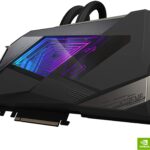
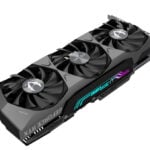
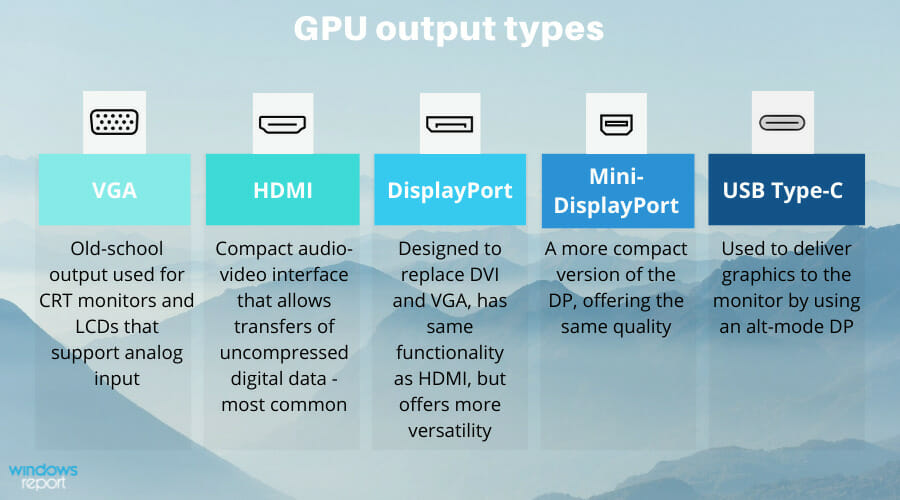
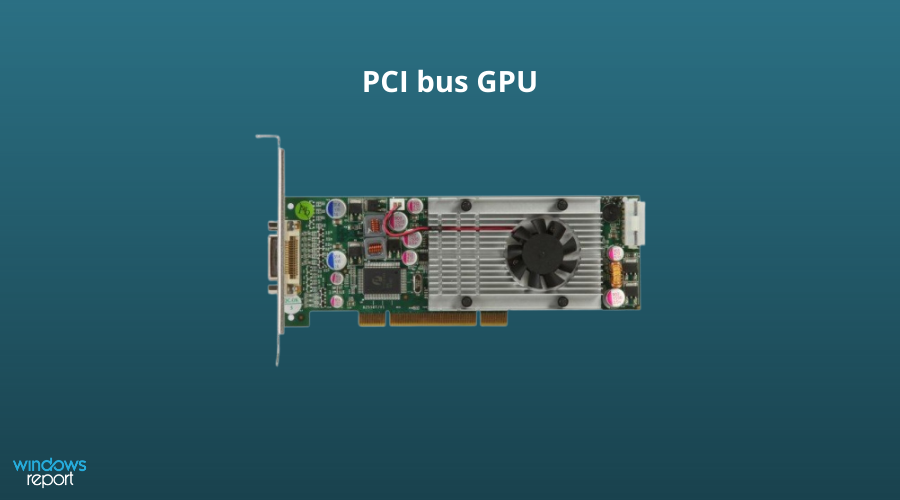
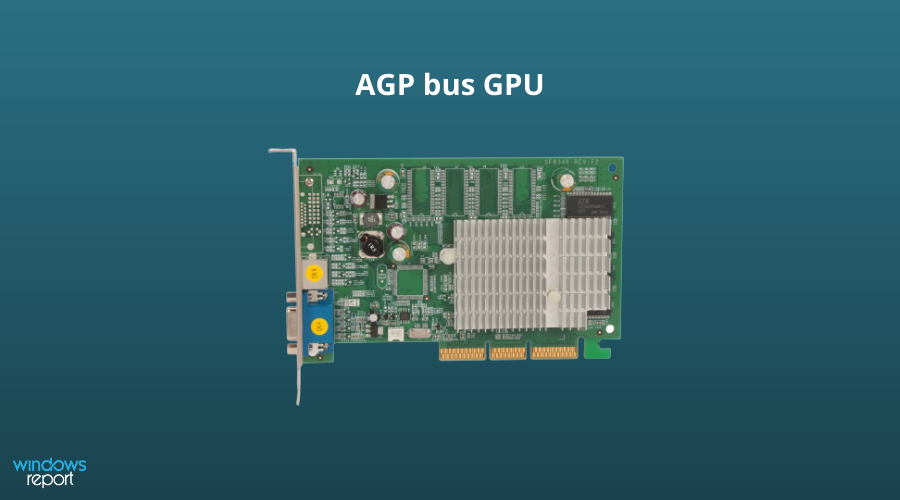
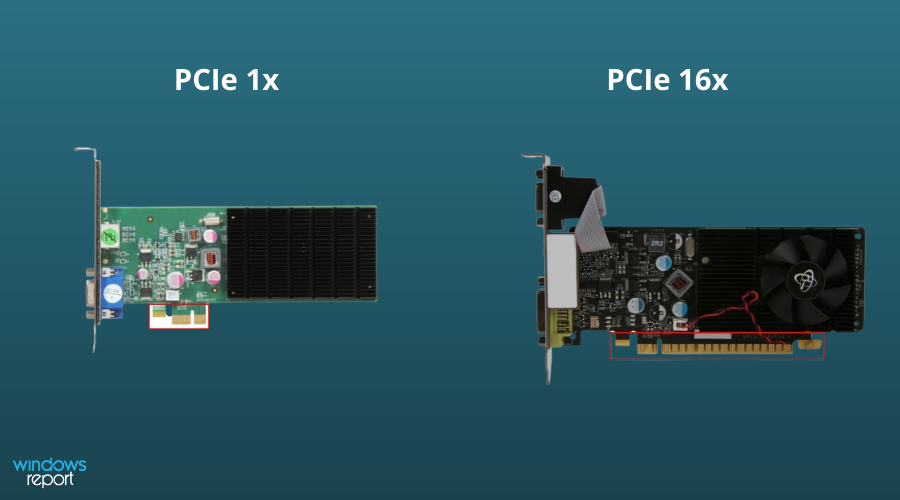


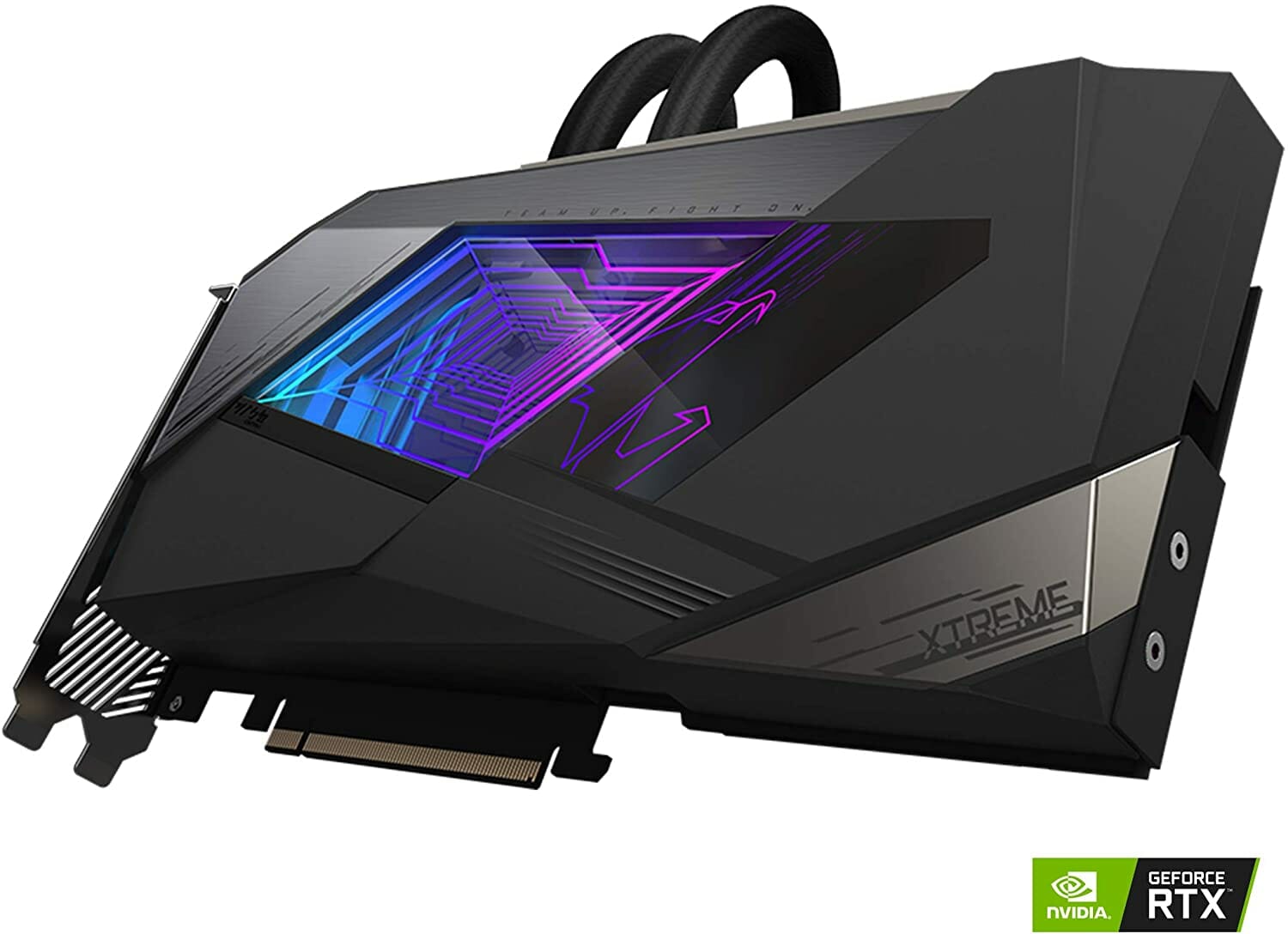


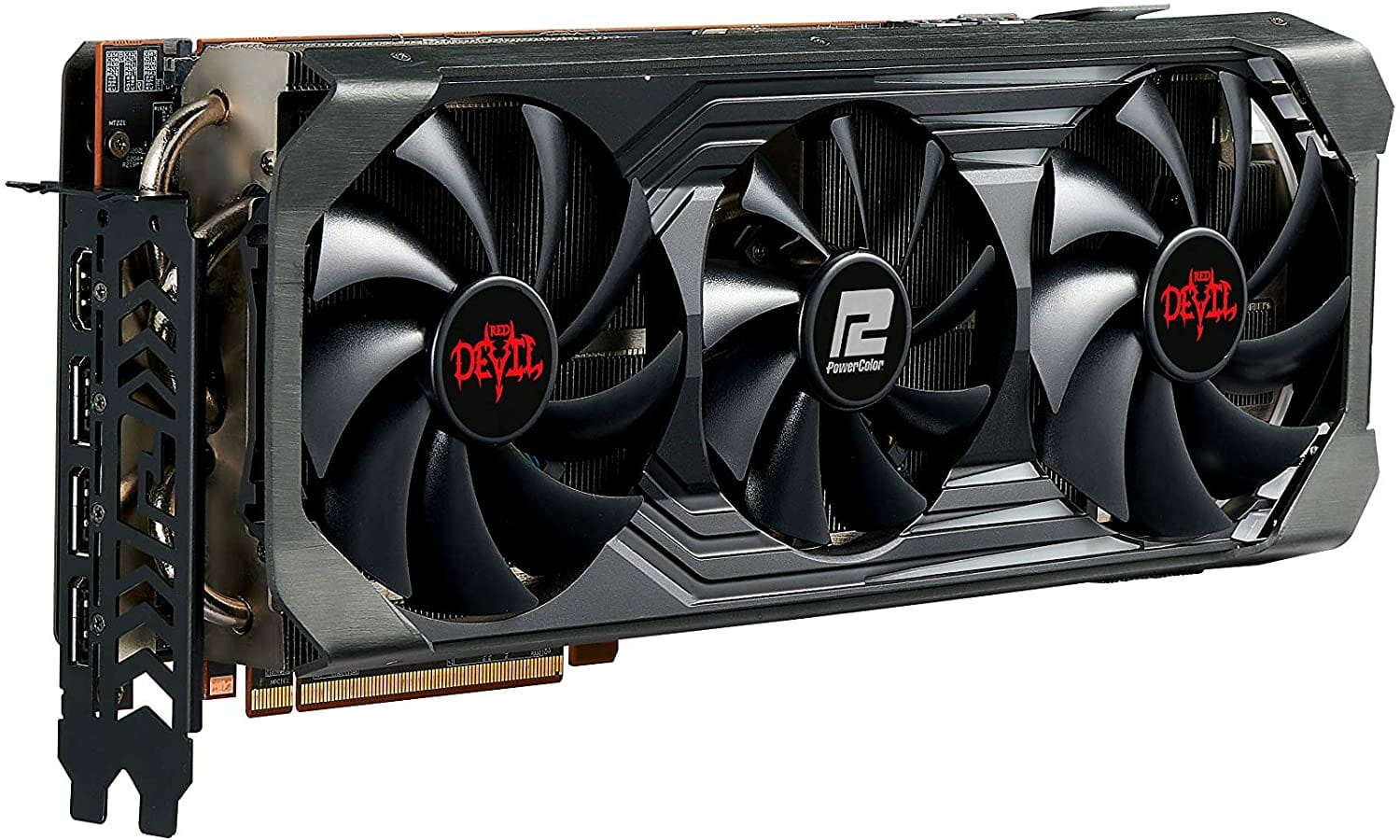
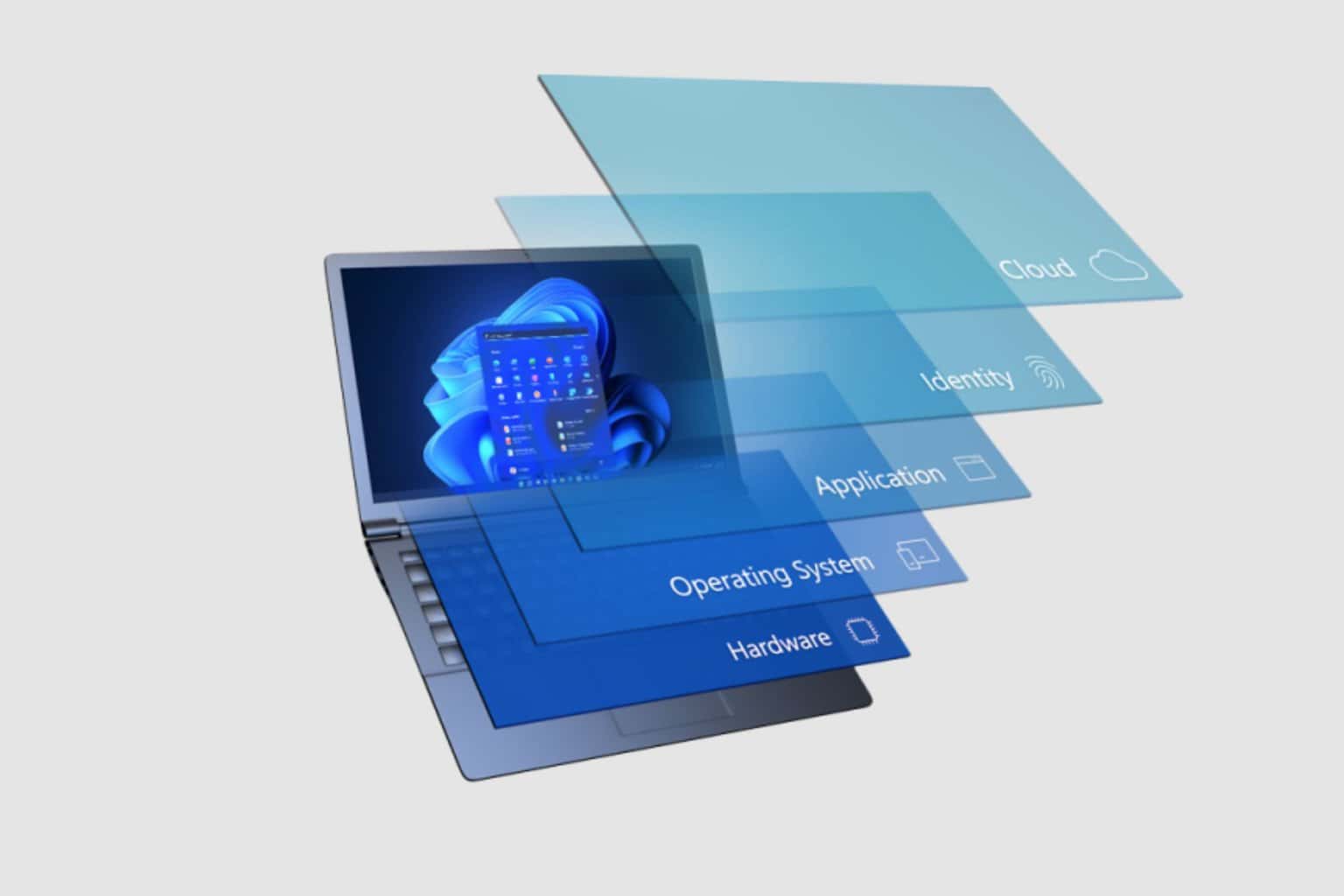

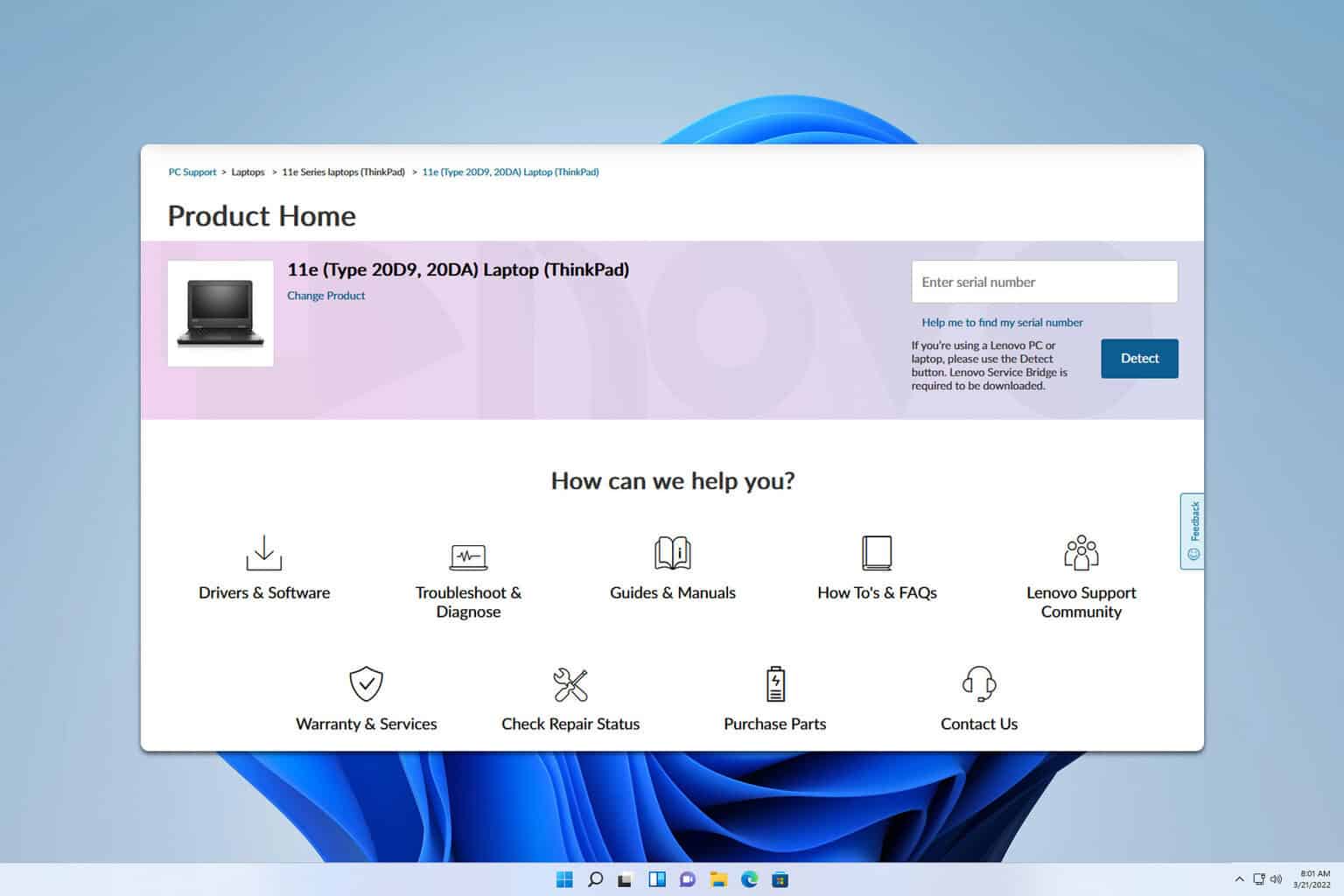

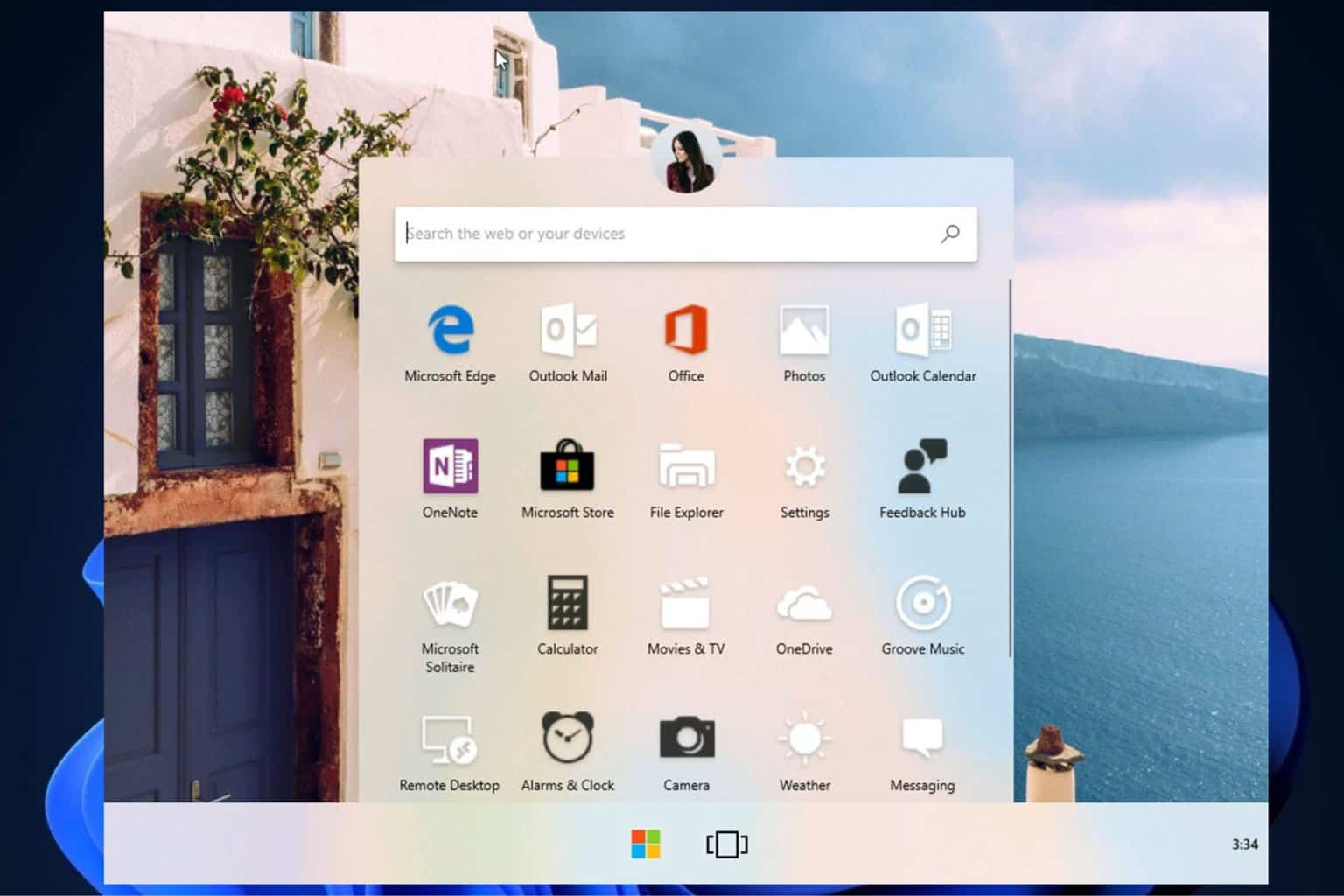
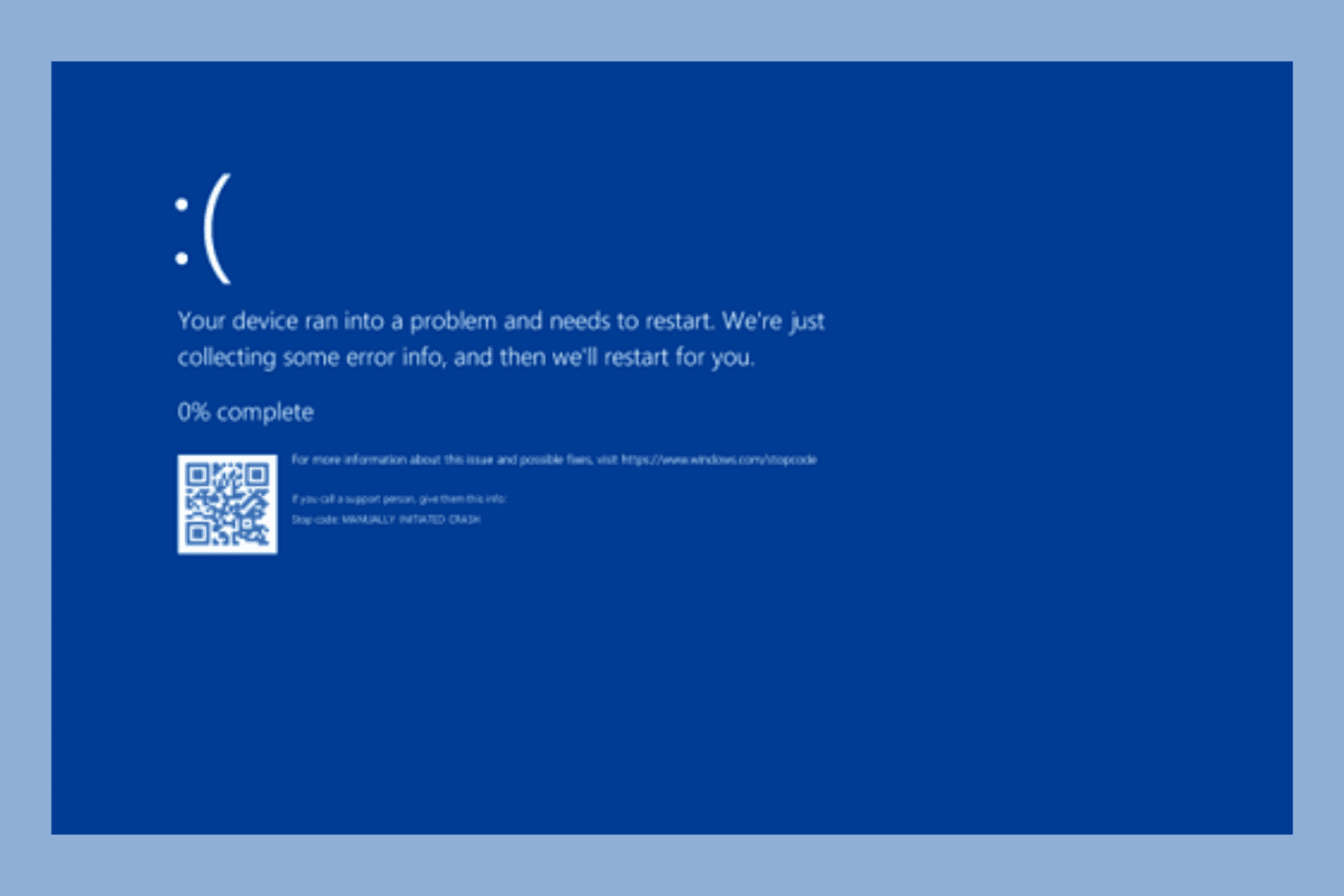
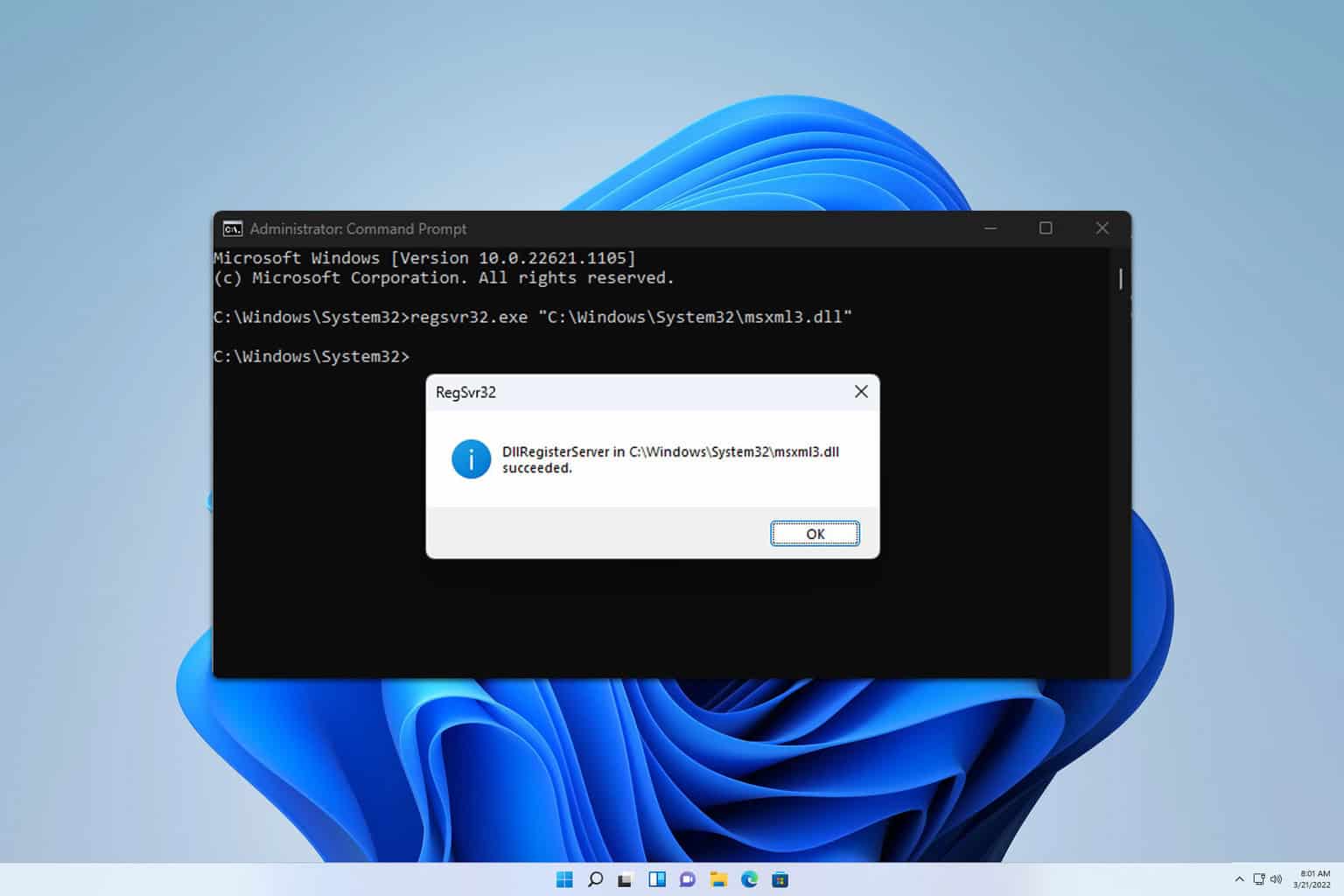
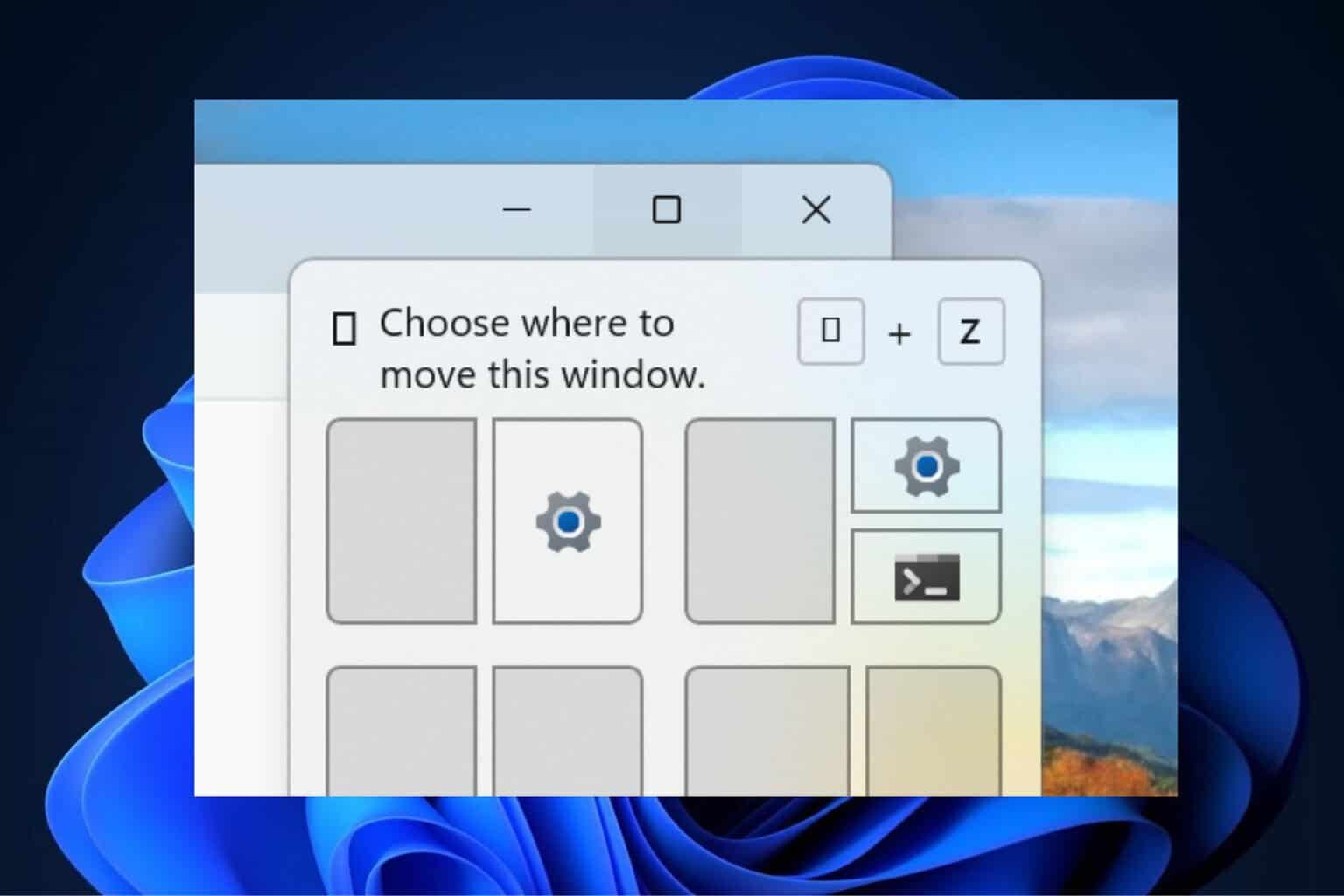
User forum
0 messages